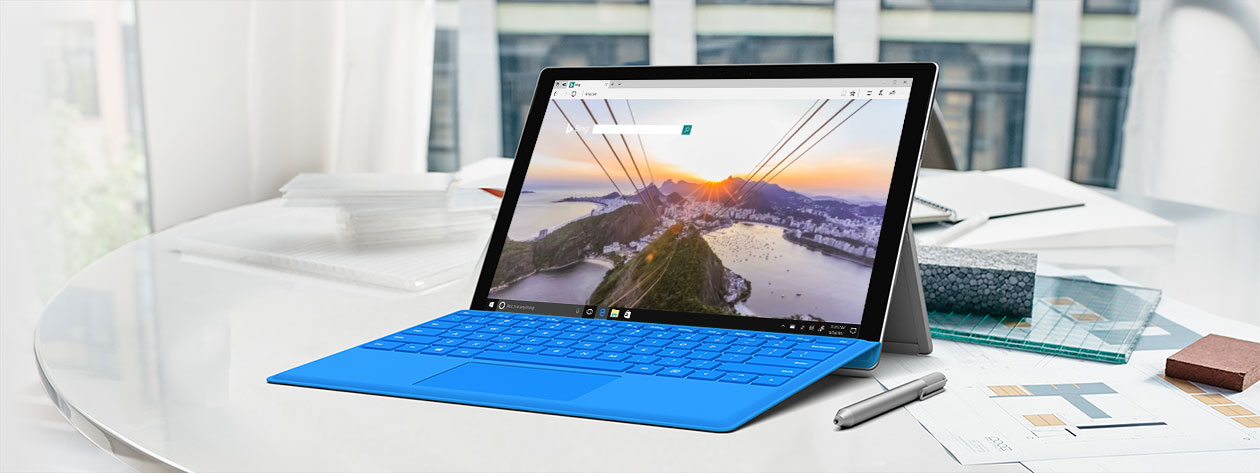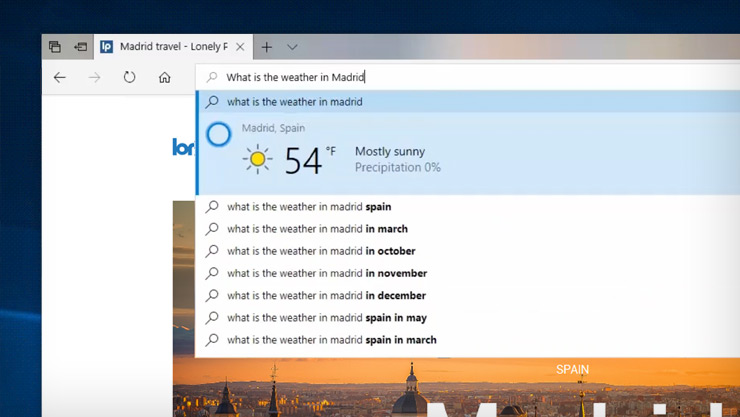The rumors were true: Microsoft Edge is moving to the open-source Chromium platform, the same platform that powers Google’s Chrome browser. And once that is done, Microsoft is bringing Edge to macOS, too. In addition, Microsoft is decoupling Edge from the Windows update process to offer a faster update cadence — and with that, it’ll bring the new Edge to Windows 7 and 8 users, too.
It’ll be a while before any of this happens, though. There’s no code to test today and the first previews are still months away. But at some point in 2019, Microsoft’s EdgeHTML and Chakra will go away and Blink and V8 will take its place. The company expects to release a first developer preview early next year.
Obviously, there is a lot to unpack here. What’s clear, though, is that Microsoft is acknowledging that Chrome and Chromium are the de facto standard today, both for users and for developers.
Over the years, especially after Microsoft left the Internet Explorer brand behind, Edge had, for the most part, become a perfectly usable browser, but Microsoft acknowledges that there were always compatibility issues. While it was investing heavily in fixing those, what we’re hearing from Microsoft is a very pragmatic message: it simply wasn’t worth the investment in engineering resources anymore. What Microsoft had to do, after all, was reverse engineer its way around problems on certain sites.

In part, that’s because Edge never quite gained the market share where developers cared enough to test their code on the platform. And with the web as big as it is, the long tail of incompatible sites remains massive.
Because many web developers work on Macs, where they don’t have access to Edge, testing for it became even more of an afterthought. Hence Microsoft’s efforts to bring Edge to the Mac, 15 years after it abandoned Internet Explorer for Mac. The company doesn’t expect that Edge on Mac will gain any significant market share, but it believes that having it available on every platform will mean that more developers will test their web apps with Edge, too.
Microsoft also admits that it didn’t help that Edge only worked on Windows 10 — and that Edge updates were bound to Windows updates. I was never quite sure why that was the case, but as Microsoft will now happily acknowledge, that meant that millions of users on older Windows versions were left behind, and even those on Windows 10 often didn’t get the latest, most compatible version of Edge because their companies remained a few updates behind.
 For better or worse, Chrome has become the default and Microsoft is going with the flow. The company could have opted to open source EdgeHTML and its JavaScript engine. That option was on the table, but in the end, it opted not to. The company says that’s due to the fact that the current version of Edge has so many hooks into Windows 10 that it simply wouldn’t make much sense to do this if Microsoft wants to take the new Edge to Windows 7 and the Mac. To be fair, this probably would’ve been a fool’s errand anyway, since it’s hard to imagine that an open-source community around Edge would’ve made much of a difference in solving the practical problems anyway.
For better or worse, Chrome has become the default and Microsoft is going with the flow. The company could have opted to open source EdgeHTML and its JavaScript engine. That option was on the table, but in the end, it opted not to. The company says that’s due to the fact that the current version of Edge has so many hooks into Windows 10 that it simply wouldn’t make much sense to do this if Microsoft wants to take the new Edge to Windows 7 and the Mac. To be fair, this probably would’ve been a fool’s errand anyway, since it’s hard to imagine that an open-source community around Edge would’ve made much of a difference in solving the practical problems anyway.
With this move, Microsoft also plans to increase its involvement in the Chromium community. That means it’ll bring to Chromium some of the work it did to make Edge work really well with touchscreens, for example. But also, as previously reported, the company now publicly notes that it is working with Google and Qualcomm to bring a native implementation of the Chrome browser to Windows 10 on ARM, making it snappier and more battery friendly than the current version that heavily relies on emulation.
Microsoft hopes that if it can make the compatibility issues a thing of the past, users will still gravitate to its browser because of what differentiates it. Maybe that’s its Cortana integration or new integrations with Windows and Office. Or maybe those are new consumer services or, for the enterprise users, specific features that make the lives of IT managers a bit easier.
When the rumors of this change first appeared a few days ago, a number of pundits argued that this isn’t great for the web because it gives even more power over web standards to the Chromium project.
I share some of those concerns, but Microsoft is making a very pragmatic argument for this move and notes that Edge’s small market share didn’t allow it to make a dent in this process anyway. By becoming more active in the Chromium community, it’ll have more of a voice — or so it hopes — and be able to advocate for web standards and bring its own innovations to Chromium.
You’re browser is probably the most complex piece of software running on your computer right now. That means switching out engines is anything but trivial. The company isn’t detailing what its development process will look like and how it’ll go about this, but we’re being told that the company is looking at which parts of the Edge experience to keep and then will work with the Chromium community to bring those to the Chromium engine, too.
Microsoft stresses that it isn’t giving up on Edge, by the way. The browser isn’t going anywhere. If you’re a happy Edge user today, chances are this move will make you an even happier Edge user in the long run. If you aren’t, Microsoft hopes you’ll give it a fresh look when the new Chromium-based version launches. It’s on Microsoft now to build a browser that is differentiated enough to get people to give it another shot.
![]()
from Microsoft – TechCrunch https://techcrunch.com/2018/12/06/microsoft-edge-goes-chromium-and-macos/
No comments:
Post a Comment